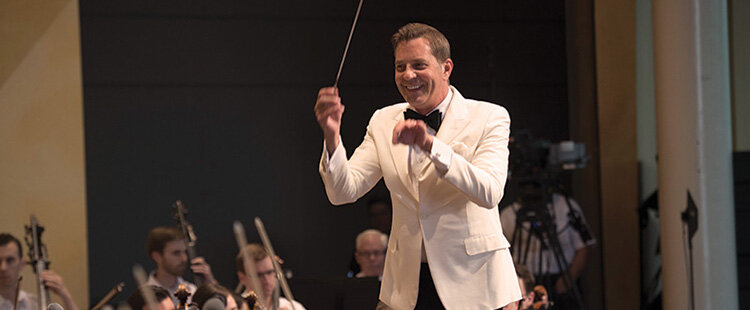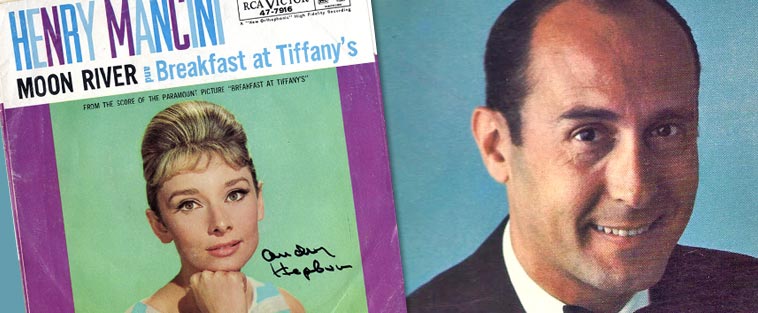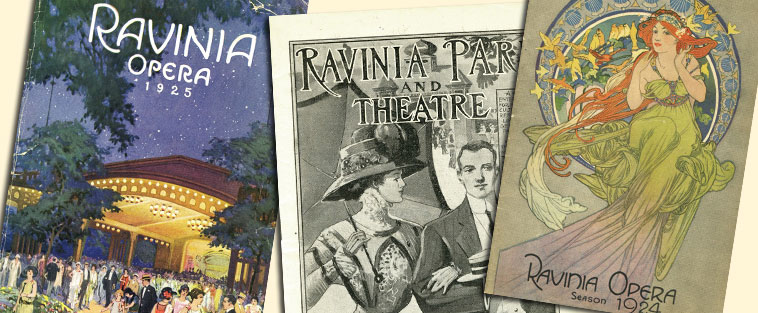“Around that same time, I found letters on Twitter and on an Instagram account called Sondheim’s Letters. Just everyone—including stars like Lin-Manuel [Miranda] and Trey Parker from South Park and the Jonathan Larson estate—all of them are posting these letters Sondheim had written to them, encouraging them, or vouching for them when they needed a grant.
Read MoreRavinia History
The Women's Board Celebrates 50 Years of Festival Friendship and Support
It was the summer of 1972. Several ambitious members of the nascent Ravinia Women’s Board had an idea. They had been gifted copies of an attractive poster and a small cookbook containing favorite recipes from members of the CSO and guest artists. If the women could resurrect an abandoned ticket booth from the maintenance lot, they thought they could sell the items and help the Festival’s Sustaining Fund through a particularly challenging period.
Read MoreSmartly Appointed: The Joffrey suits up savvy spectacles returning to Ravinia’s dance card
“To me, dance with live music is really important,” says Jeffrey Haydon, who took over last September as Ravinia’s president and chief executive officer. “We are in a very visual society right now, and I think that is a way that people can connect even more with music: by seeing it visualized through dance.”
Read MoreGotta Have My Pops: Steven Reineke lights a broad way for favorites in orchestral music
It’s pops night, which means fun is on the menu! Even the word itself conjures up blissful thoughts of relaxed musical evenings with friends and lots of irrepressible toe-tapping.
Read MoreRemembering Jesus Christ Superstar at Ravinia in 1971

Ravinia favorite John Legend wowed audiences in NBC’s Easter-night, live concert production of the Tim Rice/Andrew Lloyd Webber rock opera Jesus Christ Superstar. Ravinia famously presented the groundbreaking musical on August 6 and 7, 1971, (read the Chicago Tribune story) to what were then record-breaking audiences. One fan remembers the event.
Music Was No Balm for L. Frank Baum
 In 2005 and again in 2016, Ravinia audiences were treated to a screening of possibly the most beloved movie of all time, The Wizard of Oz, with the musical score performed live. But as old as that screen classic is—the film was released in 1939—it was not the earliest film adaptation of one of the 13 Oz novels that Lyman Frank Baum would eventually write. The earliest attempt was part of a project the author himself oversaw 31 years before Judy Garland sailed over the rainbow—and it was seen at Ravinia over a century ago.
In 2005 and again in 2016, Ravinia audiences were treated to a screening of possibly the most beloved movie of all time, The Wizard of Oz, with the musical score performed live. But as old as that screen classic is—the film was released in 1939—it was not the earliest film adaptation of one of the 13 Oz novels that Lyman Frank Baum would eventually write. The earliest attempt was part of a project the author himself oversaw 31 years before Judy Garland sailed over the rainbow—and it was seen at Ravinia over a century ago.
rewind: September 11, 1987
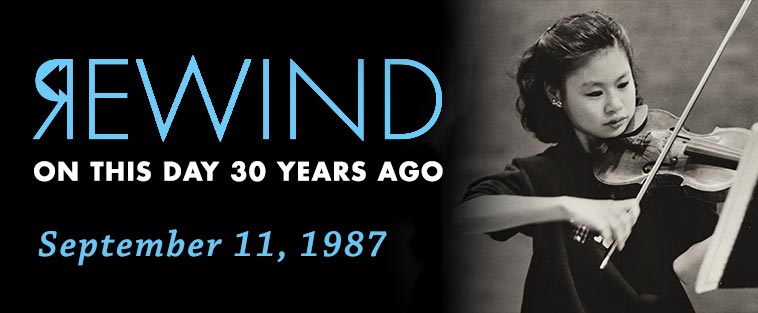
One thing that all fans of classical music might agree on is that little is as thrilling as hearing a youthful musician playing to a standard of technique and artistic mastery more commonly associated with a player two or three times her age. There may be an element of democracy in the perception of talent, but when it came to a barely teen-aged Midori, the public opinion was beyond clear. With one of her earliest performances in the United States being with the New York Philharmonic at its New Year’s Eye gala at the age of 11, reputation already preceded the violinist taking the Tanglewood stage for Leonard Bernstein’s annual Serge and Olga Koussevitzky Memorial Concert with the Boston Symphony in 1986.
Rewind: August 27, 2002
It’s a no-brainer to say that music is Ravinia’s passion. And yet, until 15 years ago the only musical Passion that had been heard at the festival was J.S. Bach’s Saint Matthew Passion—granted, it is the most popular setting of the narrative in classical music today. (Before James Levine led the Chicago Symphony Orchestra and Chorus in a pair of performances of Bach’s masterpiece in 1978 and 1980, Ravinia had presented back-to-back performances of Andrew Lloyd Webber’s Jesus Christ Superstar in 1971, but its loose interpretation of Biblical accounts makes its categorization as a Passion narrative questionable.)
Rewind: August 21, 1912
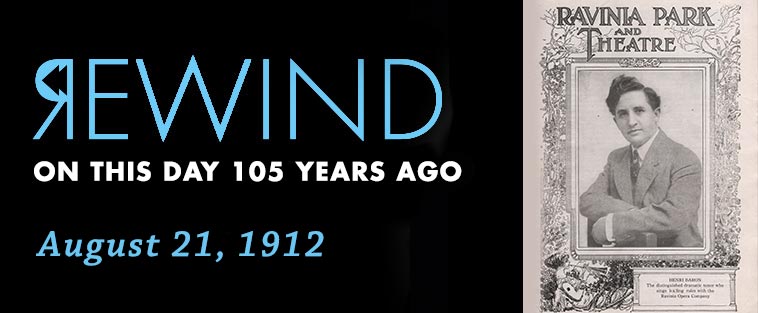
Before Ravinia emerged from the Great Depression in 1936 to begin hosting the incomparable performance residency of the Chicago Symphony Orchestra, it was for about a decade and a half known as the “summer opera capital of the world,” presenting many of the Metropolitan Opera’s foremost stars in selected scenes or acts of that venerable form of music theater. The performances were often so abridged so as to accommodate the schedule of the trains that were the primary means of travel to Ravinia (indeed, it was originally founded in 1904 as a general amusement park along the train line). However, not all operas are multi-hour, multi-act epics.
Rewind: August 10, 2007
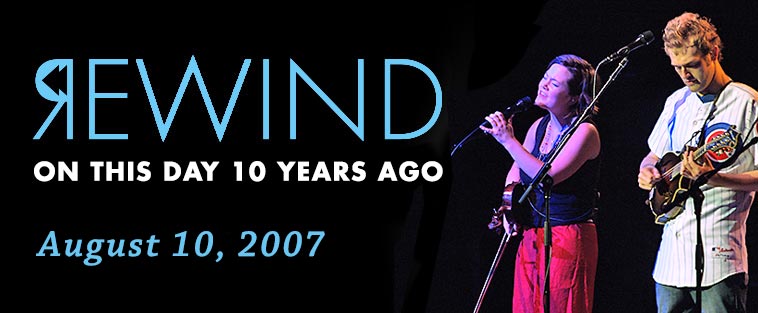
Though the terms “virtuoso” and “prodigy” are most often applied to classical musicians, mandolinist Chris Thile, fiddler Sara Watkins, and guitarist Sean Watkins easily fit the bill when they formed the band Nickel Creek in the late 1980s, before any of them were yet in their teens. The trio earned widespread attention with their third album, Nickel Creek, which was produced by Alison Krauss, herself considered a virtuoso of the fiddle.
Rewind: August 5, 1937

Now in its ninth consecutive decade, the musical partnership between Ravinia and the Chicago Symphony Orchestra continues to be a uniquely fulfilling one, with the six-week summer residency of the orchestra regularly featuring about as many programs as might be heard downtown over the rest of the year.
Huckleberry Friends: Audrey, Henry and Me
I grabbed the ad and flew to the mezzanine level of the house, where technicians and grips were arranging lights and cables. When I approached one and asked, “Do you think I could get Miss Hepburn to autograph this for me?” the grip answered, “Why not ask her yourself? She’s right over there.” I hadn’t even noticed her diminutive figure sitting on the stairs studying her script, and although I didn’t want to cause any disruption in the production, I hurriedly went over and blurted out, “Miss Hepburn, I’m a huge fan of yours and have had this photo in my office for years. Would you please sign it ‘To John’?”
Rewind: August 1, 1967
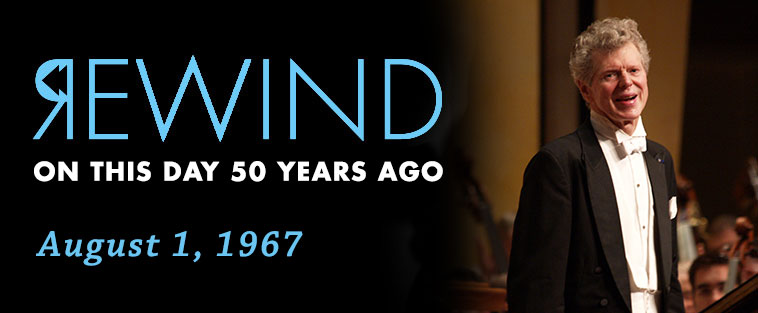
At a time when conflict with Russia weighed heavily on many minds—no, not today; during the mid-20th century—there was one thing that the then-Communist nation and the United States could agree upon: Van Cliburn was a great musician. In 1958, as the Cold War was escalating, Moscow inaugurated what is still today one of the most closely watched events in classical music, the International Tchaikovsky Competition.
Rewind: July 22, 1977
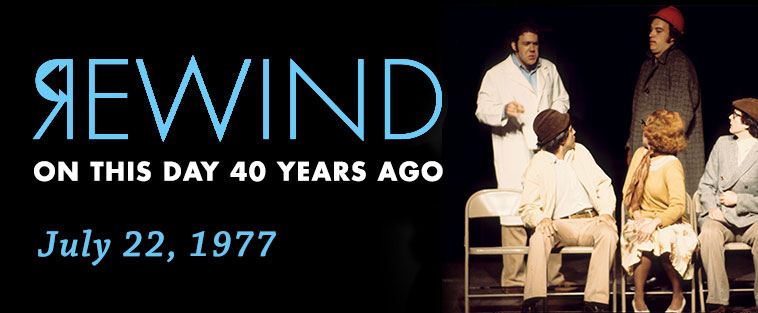
From semistaged operas and musicals to plays and other performances of spoken word, top stagecraft has long been a part of Ravinia’s DNA, but even longtime fans of the festival might be surprised to learn that during a three-year period in the late 1970s, you could enjoy violins at 8 and violent laughter at 11.
Rewind: July 6, 1967
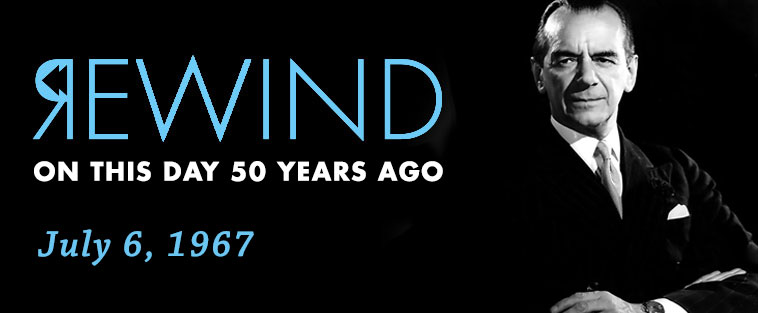
As America had Robert Shaw, so Britain had Malcolm Sargent. Both dubbed the “deans of choral music” of their respective nations, both also had uncanny command of music that did not feature the voice. And just as Shaw became a household name for his Christmas albums, so too did Sargent become a well-loved public figure through his many appearances on BBC radio and as chief conductor of the Proms for 20 years.
Rewind: July 5, 1957
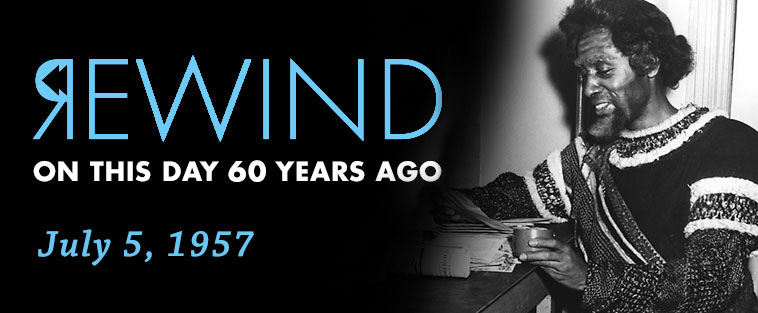
You always remember your first. As the curtain rose on 1955, the Metropolitan Opera presented its first African-American cast members: contralto Marian Anderson as Ulrica in Verdi’s Un ballo in maschera and, three weeks later, baritone Robert McFerrin as Amonasro in Verdi’s Aida. McFerrin was subsequently specially chosen by composer/conductor Virgil Thomson to breathe life into his Five Songs from William Blake—both the singer’s Ravinia and Chicago Symphony Orchestra debuts—on a program of Thomson’s works at Ravinia on July 5, 1957.
Rewind: June 17, 1957
You can’t miss it. Nestled in the center of Ravinia and gazing upon the festival’s grand entrance is the Martin Theatre, the immaculate Arts and Crafts–style concert hall that has stood since the park first opened in 1904. But over Ravinia’s 113-year history, it hasn’t always been a stage for the premier chamber musicians—and even small orchestras—of the world. During the first decade of the park’s existence, it was largely used for motion pictures.
Televised 1966 Ravinia Special Is A Blast From The Past
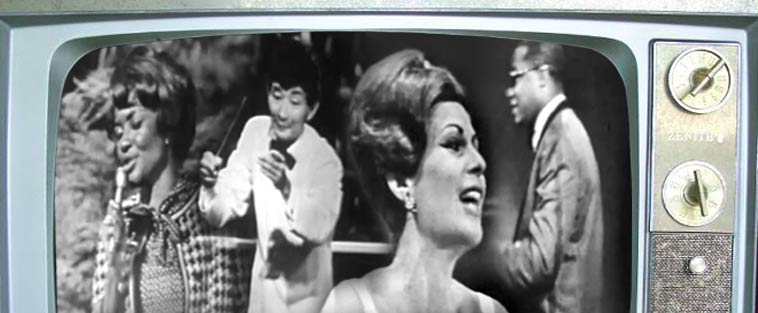 In 1966, LBJ was president, miniskirts were quickly gaining popularity, and Simon and Garfunkel's "The Sound of Silence" became a hit. This was also the year that WBKB aired The Sound of Ravinia, an hour-long television special that showcased the many sides of Ravinia including classical, jazz, opera, pop, and folk music. It aired on Thursday, August 11, and contains footage from four separate concert dates.
In 1966, LBJ was president, miniskirts were quickly gaining popularity, and Simon and Garfunkel's "The Sound of Silence" became a hit. This was also the year that WBKB aired The Sound of Ravinia, an hour-long television special that showcased the many sides of Ravinia including classical, jazz, opera, pop, and folk music. It aired on Thursday, August 11, and contains footage from four separate concert dates.Explore the Gorgeous Artwork of Vintage Ravinia Program Books
The covers of Ravinia's programs from its opening in 1904 through the 1930s were gorgeous “mini-posters” designed by well-known Chicago-area illustrators. I’d run across them in used bookstores and junk shops, where they were usually mixed in with old magazines and comic books. By the time I left for college, I’d been able to gather together most of the run. You’ll notice names like Hamilton King, James McCracken, Stark Davis, and intaglio artist Allan Weary. There’s also a 1930 program cover designed/illustrated by then Chicagoan Hal Foster, who was between Tarzan strip assignments.
Ravinia Park Depicted Beautifully In These Vintage Program Ads From The '50s And '60s
There is something magical in viewing vintage advertisements, especially from the ’50s and ’60s. From the photographic/illustrative choices to the verbal style of the copy, it’s possible to get a small sense of what culture was like back then. Ravinia’s old program books contain a wealth of these vintage advertisements, with companies pitching such varied products as stereos, records, fashion, pianos, jewelry, and more. Some make overt references to Ravinia, many containing photographs or illustrations of the park itself to make the Ravinia connection that much stronger. The selections in this post focus on these very ads.




